Chickens need a varied diet to produce the healthiest eggs and keep their fine feathers looking healthy. Chicken mama Melissa Strauss has some plants you can grow for your birds to snack on.
Oregano

A thick, vibrant green plant with tiny round leaves that form a soft, dense carpet. Chickens enjoy this herb mixed into their feed, and it has the added benefit of helping repel insects.
Botanical name: Origanum vulgare
Sun requirements: Full sun
Height: 1′-3′
Hardiness zones: 4-10
Oregano tops my list of beneficial plants for backyard chickens. You’ll need to chop it up before adding it to their food, but the health benefits make it well worth the extra effort. This wonderful herb contains natural antiviral and antibiotic properties that support your flock’s digestive health and immune system. The anti-inflammatory qualities of oregano can help your birds stay healthier and may even help them live longer. Some research suggests it might help fight harmful bacteria like E. coli and Salmonella, which is great news for everyone who enjoys your fresh eggs. I like to put fresh oregano in my food processor to chop it finely, then sprinkle it over their regular feed. Most chickens will happily eat it this way.
Dandelion

Botanical name: Taraxacum officinale
Sun requirements: Full sun to partial shade
Height: 2″-1′
Hardiness zones: 2-11
Most gardeners consider dandelions weeds, but for your chickens, they’re a nutritious treat packed with goodness. These sunny flowers and their greens provide excellent fiber, potassium, zinc, iron, and vitamins A, B, C, and D – all of which contribute to healthier hens and better quality eggs. The fiber content helps with digestion, and since chickens naturally enjoy foraging for dandelions, they’re an easy way to add variety to their diet. Beyond being great for chickens, dandelions benefit native pollinators and even have health benefits for humans too! They act as a natural diuretic and contain many beneficial compounds. While you might not want them taking over your lawn, planting some in or near your chicken run is a smart idea that your flock will appreciate.
Clover
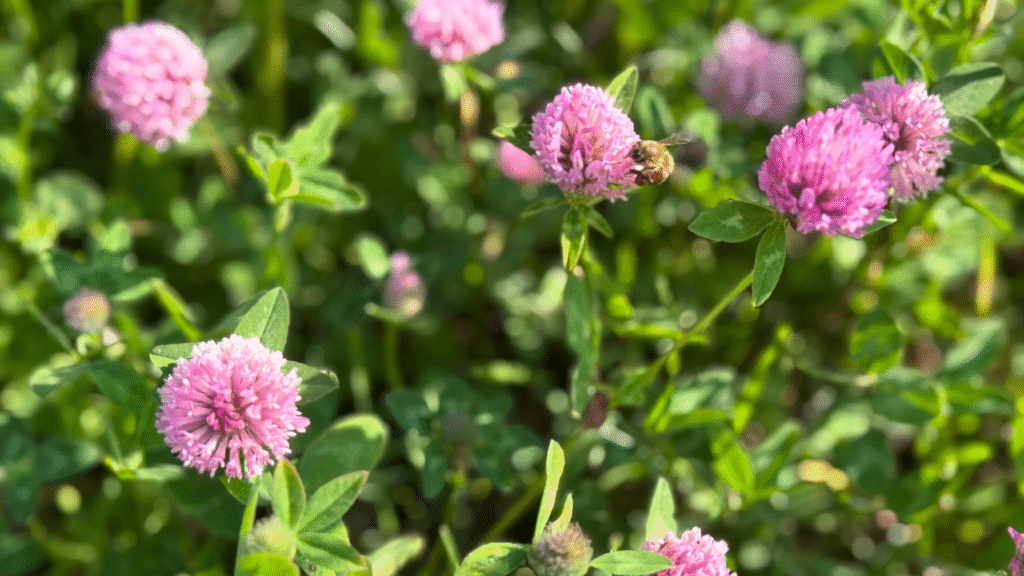
Botanical name: Trifolium spp.
Sun requirements: Full sun to partial shade
Height: Up to 3′
Hardiness zones: 3-10
Clover makes another excellent choice for chicken foraging areas. As a legume, it has the special ability to fix nitrogen in the soil, which means while it’s feeding your birds and local bees, it’s also naturally fertilizing the ground for other plants to grow better. Several clover varieties work particularly well for chicken forage. White clover, red clover, and crimson clover all have sturdy growth habits that can withstand some chicken scratching and pecking. When planting clover seeds, be sure to protect them until they’re established, or your eager chickens might eat all the seeds before they get a chance to sprout! You can either let your birds graze on the living plants or cut some to mix into their feed. Just check that the specific type you choose isn’t considered invasive in your region before planting.
American Beautyberry

Botanical name: Callicarpa americana
Sun requirements: Full sun to partial shade
Height: 3′-8′
Hardiness zones: 6-10
I discovered the value of American beautyberry for chickens somewhat by accident, and it’s become one of my favorite plants for the flock. The chickens absolutely love those bright purple berries, and the shrub produces them in such abundance that there’s plenty to share. At first, the birds will happily clean off all the berries within their reach. After they’ve picked the lower branches clean, I like to trim some of the higher branches and toss them into the run. This gives the chickens more berries to enjoy while serving the dual purpose of helping prune the plant. It’s a great way to provide your birds with a tasty, natural supplement while keeping your beautyberry shrub well-shaped and productive.
Purslane
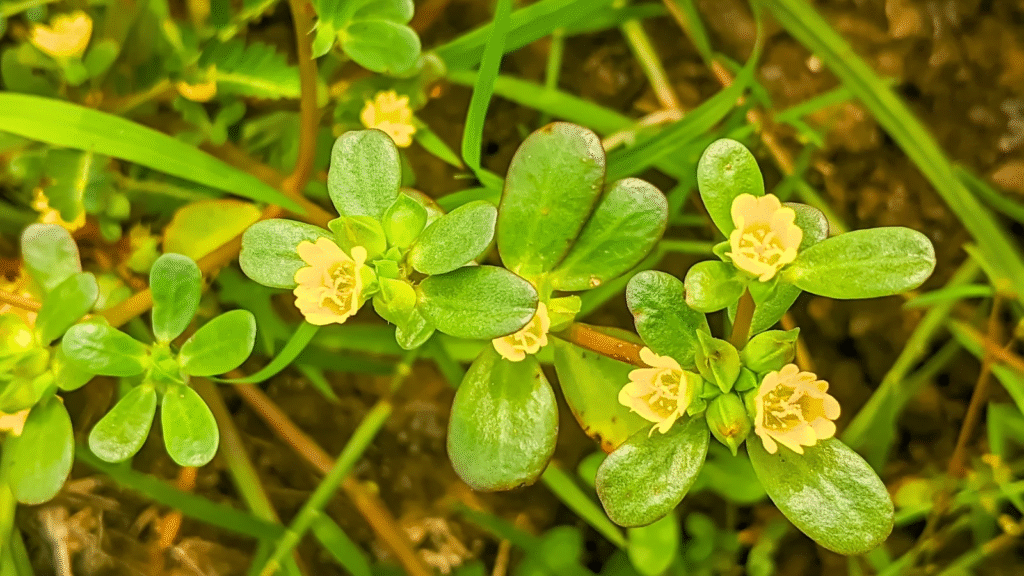
Botanical name: Portulaca oleracea
Sun requirements: Full sun
Height: 2″-3″
Hardiness zones: 3-12
Many people grow purslane as an ornamental plant, while others consider it a common weed. However, it’s actually quite valuable for chickens. Research has shown that including small amounts of purslane in your chickens’ diet can help maintain a healthy balance in their gut microbiome. This pretty little plant serves as a good source of omega-3 fatty acids, which then transfer to the eggs they lay – meaning you get healthier eggs too! It’s packed with beneficial vitamins and minerals, and studies indicate it can even improve growth performance in chickens raised for meat. One word of caution: purslane can become invasive in some areas, so be sure to check whether it’s appropriate to grow in your location before planting it outside of containers.
Oxalis
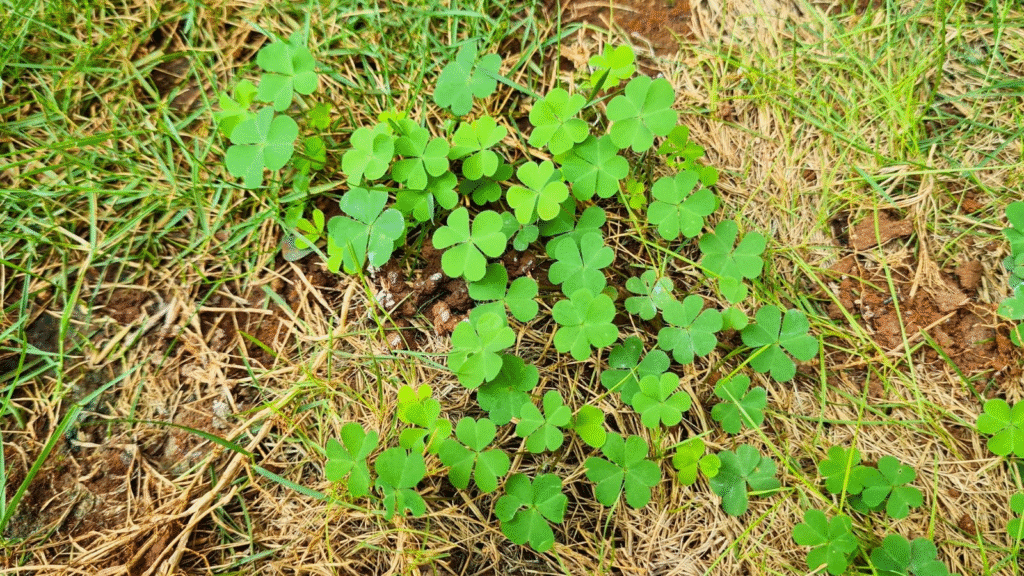
Botanical name: Oxalis spp.
Sun requirements: Full sun to partial shade
Height: 4″-12″
Hardiness zones: 6-12
Chickens tend to enjoy oxalis in moderation rather than overindulging in it. They seem to find this nutrient-rich plant more appealing than many other common weeds. The birds particularly like digging up and eating the small bulbils that grow underground. Because oxalis contains oxalic acid, your chickens will naturally limit how much they consume, which is actually beneficial since this prevents them from eating too much at once. This self-limiting quality makes oxalis a good choice if you want to include some decorative plants in your garden that your chickens will occasionally snack on. It adds visual interest to your space while providing your flock with an occasional natural treat.
Parsley
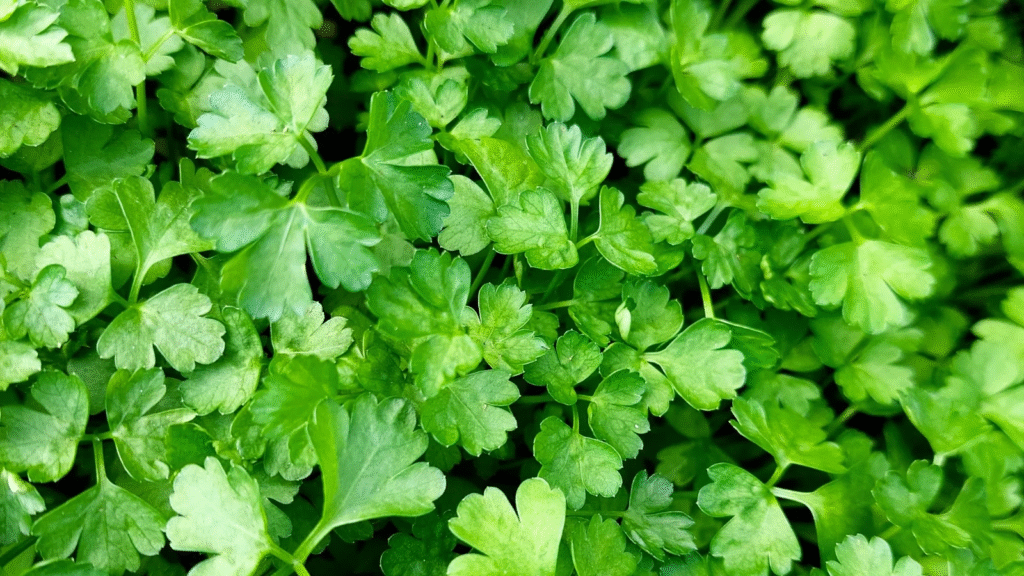
Botanical name: Petroselinum crispum
Sun requirements: Full sun to partial shade
Height: 8″-3′
Hardiness zones: 2-11
While we often think of parsley as a kitchen herb for humans, it offers numerous benefits for chickens as well. This nutritious plant aids in digestion and may help chickens naturally expel certain parasites. Parsley contains an impressive array of vitamins and minerals that contribute to overall health. Some chicken keepers report that parsley appears to support healthy blood vessel development and promote good feather growth. The calcium content in parsley can help strengthen eggshells too. Whether you grow it fresh for your chickens to peck at or dry some to mix into their feed, parsley makes an excellent addition to your flock’s diet. It’s relatively easy to grow and provides benefits all around.
Collard Greens

Botanical name: Brassica oleracea var. viridis
Sun requirements: Full sun
Height: 1-6′
Hardiness zones: 2-11
In my experience, chickens absolutely adore collard greens – sometimes too much! If I don’t protect my collard plants, my flock will completely strip the leaves, leaving behind only the barest skeletons of the plants. There must be something particularly appealing about the texture or taste that drives them wild for these greens. Beyond being a favorite treat, collards provide excellent nutritional value. They’re packed with fiber that supports healthy digestion, along with various vitamins and minerals that contribute to good egg production. Watching a group of chickens excitedly working together to demolish a large collard green leaf is both amusing and satisfying, knowing they’re getting such good nutrition while having fun.
Spinach
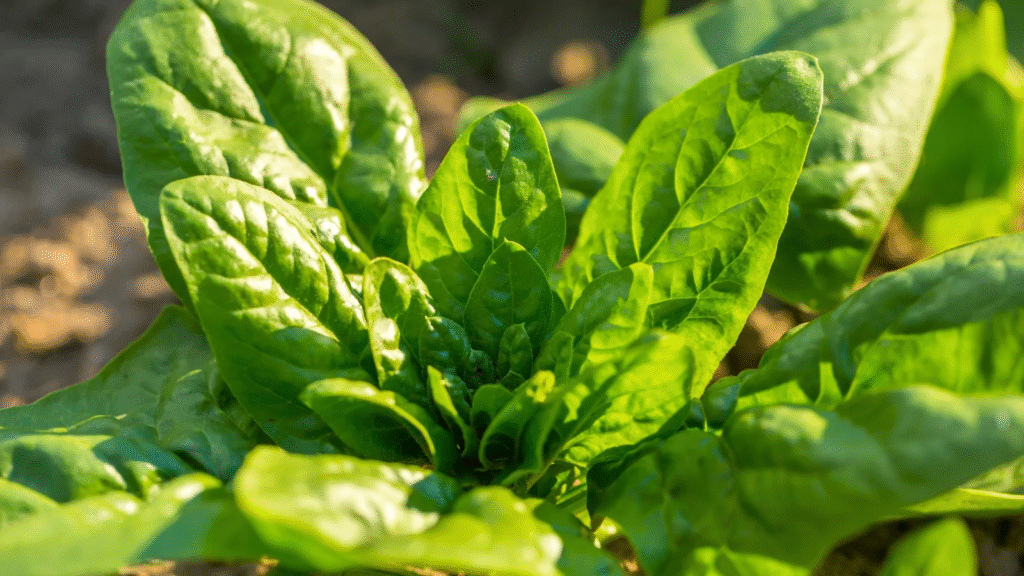
Botanical name: Spinacia oleracea
Sun requirements: Full sun
Height: Up to 18″
Hardiness zones: 2-11
Spinach is a nutrient powerhouse that can benefit your chickens, but it requires some careful consideration when feeding. The plant contains oxalic acid, which in large amounts can interfere with calcium absorption – something particularly important for laying hens who need calcium for strong eggshells. However, when fed in moderation, spinach offers many benefits. It’s rich in vitamins A, B, C, and K, and some chicken keepers report it may enhance yolk color and quality. The key is to offer spinach as part of a varied diet that includes other leafy greens too. Pay attention to your hens’ eggshell quality when introducing spinach to their diet, as this can help you determine if you’re feeding the right amount.
Pumpkin
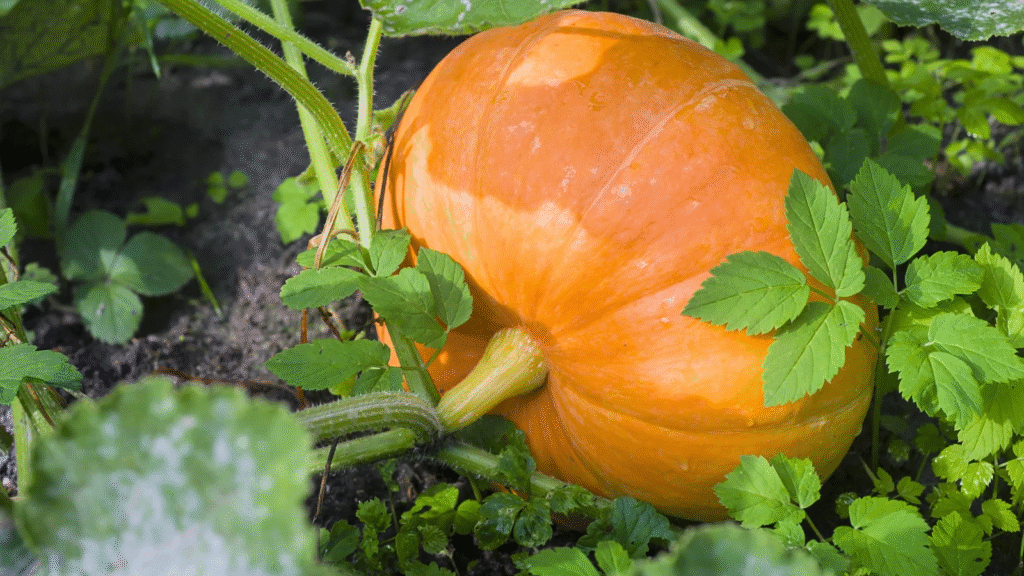
Botanical name: Cucurbita pepo
Sun requirements: Full sun
Height: 10′-20′
Hardiness zones: 3-11
Chickens typically show great enthusiasm for pumpkins and other similar squash. These fruits provide excellent nutritional benefits – the flesh is rich in fiber that aids digestion, contains zinc that supports healthy feather growth, and provides beta-carotene. The seeds are particularly valuable as they contain antioxidants that may help combat parasites. Beyond the nutritional aspects, pumpkins can provide wonderful entertainment for your flock. Try shaving off just a bit of the tough outer rind and giving them a whole pumpkin to investigate. They’ll spend hours pecking at it, and you might end up with some amusing chicken-created “jack-o-lantern” designs in the process!
Sunflower
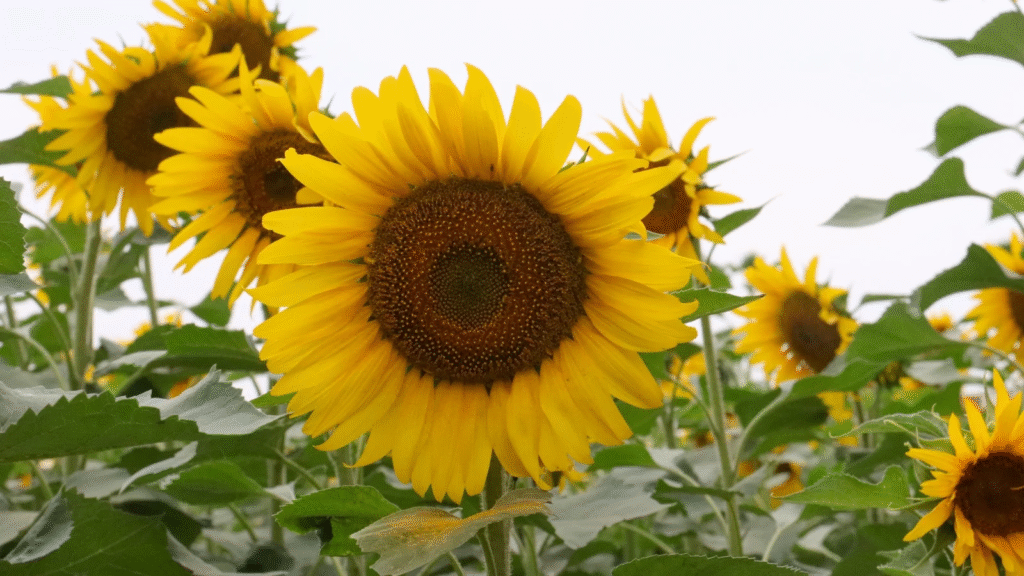
Botanical name: Helianthus annuus
Sun requirements: Full sun
Height: Up to 25′
Hardiness zones: 2-11
Sunflowers make an excellent dual-purpose crop for chicken keepers – they’re beautiful to look at while also providing valuable food for your flock. The seeds are particularly beneficial during fall when chickens are often molting and need extra protein to regrow their feathers. Time this natural need perfectly with when sunflowers are ready for harvest. I like to let the seed heads dry right on the stalks, then give them to my chickens whole. Watching a group of chickens excitedly working together to extract all the seeds from a sunflower head is quite entertaining! The seeds provide high-quality nutrition while keeping your birds happily occupied.
Cucumber
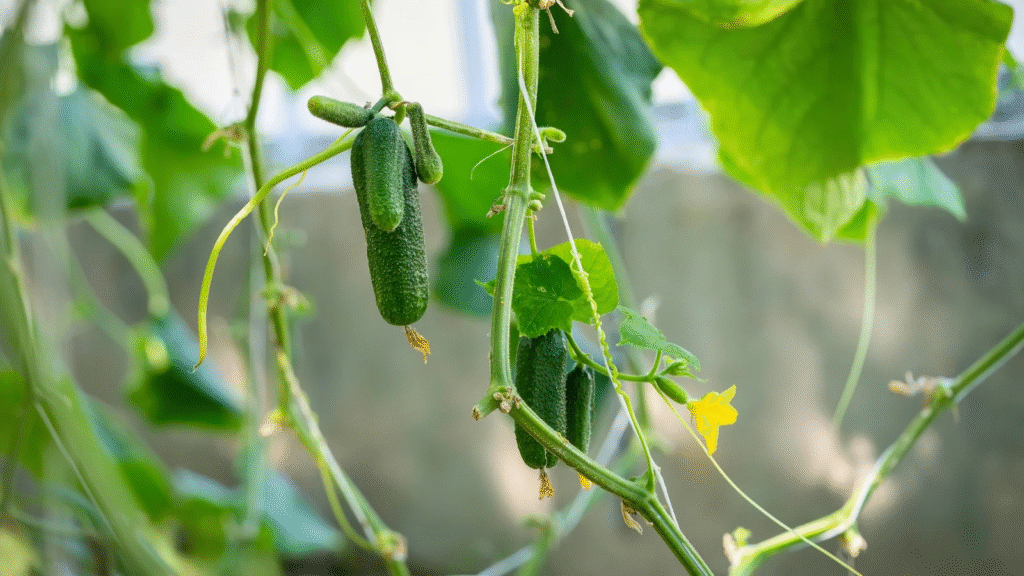
Botanical name: Cucumis sativus
Sun requirements: Full sun
Height: 10″-2′
Hardiness zones: 2-11
Cucumbers make a wonderful treat for chickens, especially during hot summer weather. Their high water content helps keep your flock hydrated, while the potassium and vitamin C they contain contribute to overall health. The fiber in cucumbers supports good digestion too. You can offer cucumbers to your chickens either sliced or whole – many birds enjoy the challenge of pecking through the tougher skin to get to the moist interior. It’s a great way to provide both nutrition and entertainment during warmer months when chickens appreciate cooling, watery foods.
Corn
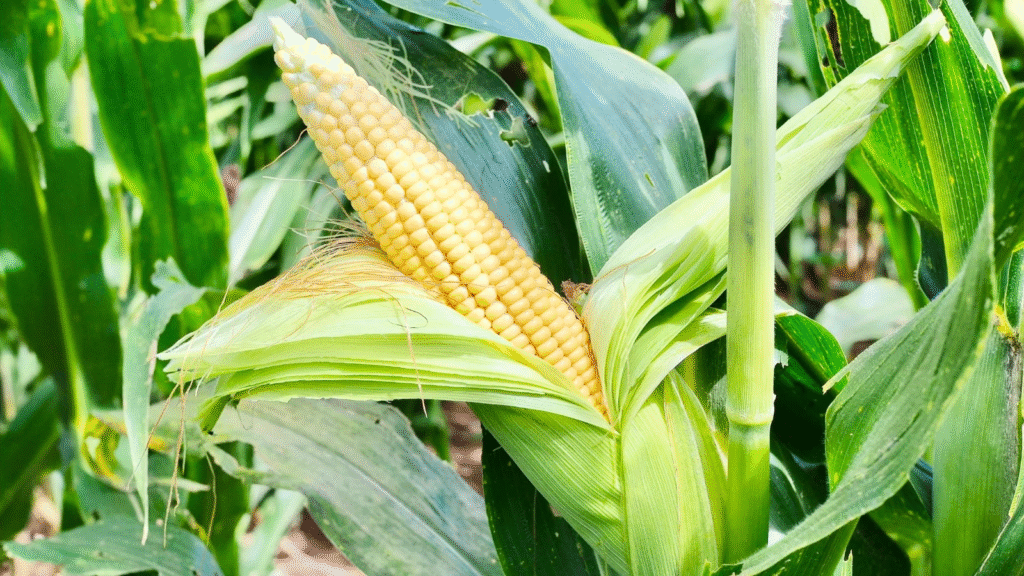
Botanical name: Zea mays
Sun requirements: Full sun
Height: 5′-12′
Hardiness zones: 3-11
Corn has long been a staple feed for many farm animals, and chickens are no exception. It provides excellent carbohydrates that give your birds plenty of energy. One interesting aspect of corn is that it tends to raise chickens’ core body temperature, making it particularly good to feed during cooler weather. You can offer corn to your chickens in several ways – cracked corn is common, but they also enjoy fresh corn on the cob. I like to toss them whole cobs and watch as they peck away at the kernels. This not only provides good nutrition but also keeps them mentally stimulated as they work to get all the tasty bits off the cob.
Amaranth
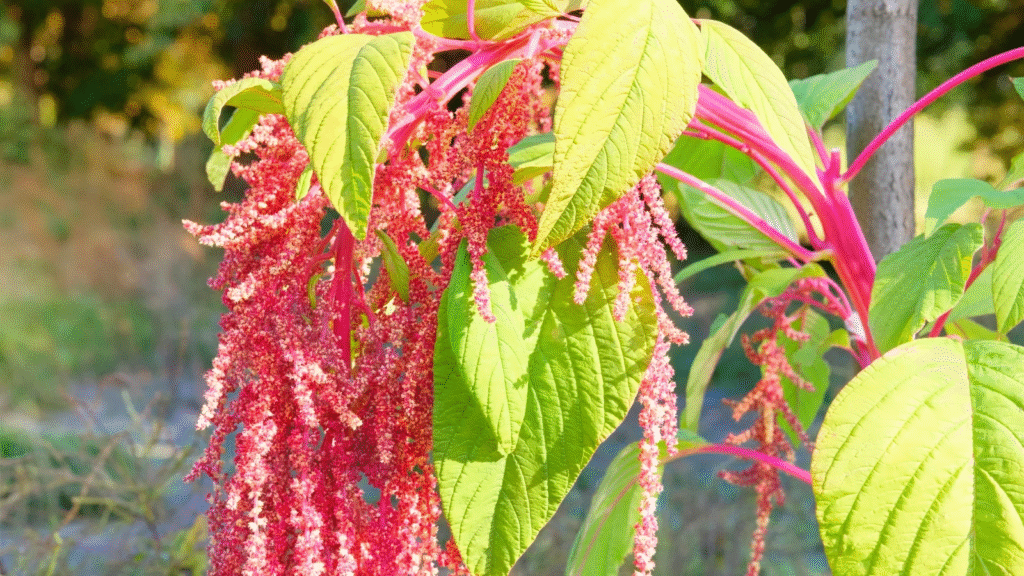
Botanical name: Amaranthus spp.
Sun requirements: Full sun
Height: Up to 10′
Hardiness zones: 2-11
While amaranth requires a bit more attention than some other chicken-friendly plants, it can be well worth the effort. The leaves have a spinach-like flavor and are rich in protein, while the seeds provide both protein and fiber that can supplement or replace other grains in your chickens’ diet. Some preparation is needed before feeding – the leaves should be dried and the seeds heat-treated to remove certain anti-nutritional factors that could otherwise interfere with your chickens’ digestion and growth. When properly prepared, amaranth becomes a highly nutritious addition to their diet that many flocks enjoy.
Alfalfa
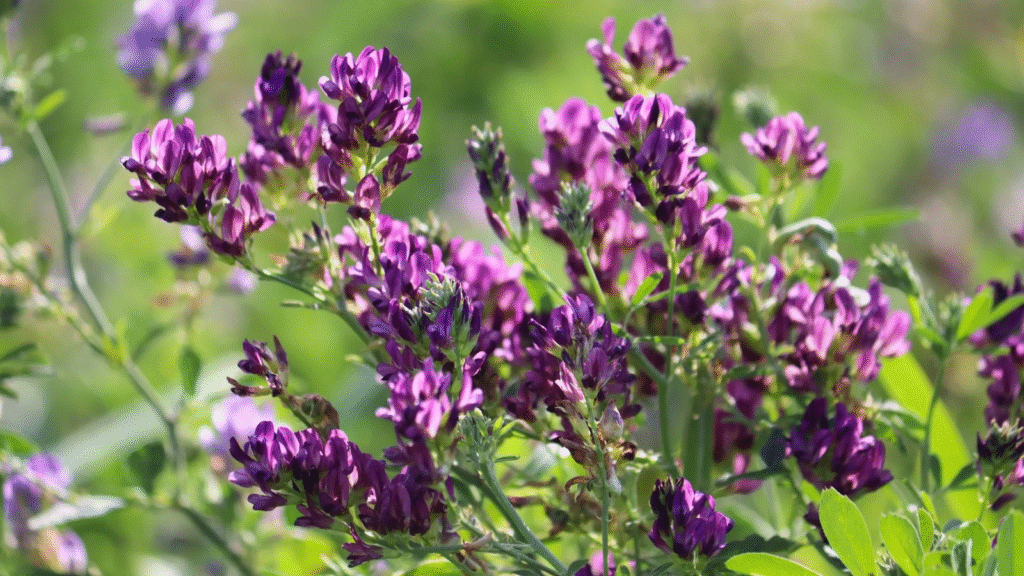
Botanical name: Medicago sativa
Sun requirements: Full sun
Alfalfa serves as an excellent protein source for supplementing your chickens’ diet. You can use it in several ways – feed it directly to your birds, or spread it in their run for them to scratch through and nibble on. Beyond its protein content, alfalfa provides good fiber and contains xanthophylls, the pigments that give egg yolks their rich yellow color. As a legume, alfalfa also fixes nitrogen in the soil, making it a great cover crop to grow in your garden during off-seasons. This way, you improve your soil while also producing food for your flock – a perfect example of sustainable chicken keeping!

